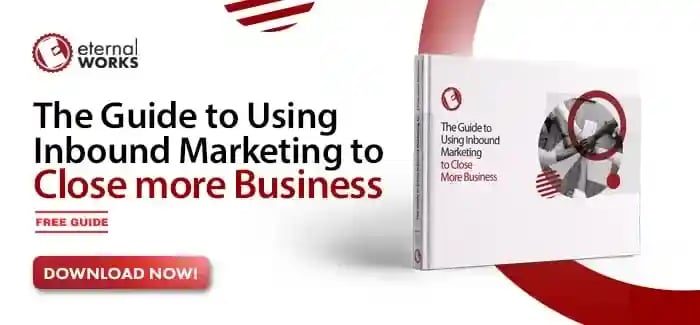You've probably always envisioned a sales funnel as a one-way trip: prospects come in at the top, and customers come out at the bottom. A great inbound funnel, however, is more like a well-oiled machine or a flywheel. In this article, we'll explain why that's the case.
Reimagining Your View of the Sales Funnel
A One-Way Sales Funnel
In recent years, we've only thought of "funnel" in the traditional sense when describing sales. The funnel depicts how we pour prospects into the top and watch as customers "magically" come out at the bottom. The idea is the more prospects you pour into the top of your funnel, the higher your chances of seeing customers come out at the bottom. Looking at the funnel, we see it's also impossible for what comes out (customers) to affect what goes in (prospects and leads).
But there is a better way to think about the sales funnel.
An Omnidirectional Sales Flywheel
We're still going to approach it from the traditional sense in that you need offers for the top, middle, and bottom of the funnel, but rather than a one-way, linear path, we are going to adapt HubSpot's idea of the flywheel.
Instead of relying on the idea that your customers have no effect on prospects, the truth is your customers and what they share have a lot of impact on your business. One bad review can taint numerous great reviews.
A wheel naturally rotates and can either build momentum or friction depending on the spokes and what's going on inside. This more accurately describes the situation with your business. You can generate momentum with the help of great customers or you can stall out if you receive too many bad reviews.
For more information, check out what HubSpot has to say about going from funnel to flywheel here.
Essentials for Building a Great Inbound Funnel (AKA Flywheel)
In the meantime, let's look at the essentials for building a great inbound funnel/flywheel.
When considering your flywheel, your customers are at the center. So, you must always keep your personas and customers in mind when you are creating content. To do this, you need to address each stage of the buyer's journey and consider the problem your prospects are looking to solve.
Below are seven must-haves for building a sales flywheel.
1. Top of the funnel (TOFU) CONTENT
When considering the top of your funnel, these prospects are in the awareness phase. You need compelling content that speaks to your prospect's pain point or problem they are trying to solve.
2. Middle of the funnel (MOFU) CONTENT
When looking at the middle of your funnel, these prospects are in the consideration phase. You need compelling content that helps as your prospect considers ways to solve their problem.
3. Bottom of the funnel (BOFU) CONTENT
When looking at the bottom of your funnel, these prospects are in the decision phase. You need compelling content that helps as your prospect considers ways to solve their problem.
4. Mix of content TYPE
Content still rules the internet, and that isn't going to change. What has changed is all of the options and ways to consume content on the internet.
Let's be honest. We get bored easily! You have to mix it up and keep your content fresh to stay in front of your audience.
Keeping your content fresh doesn't have to be taxing, though. An easy way to extend the life of your content is to repurpose it. For example, you can take a blog and repurpose it into a video series or a podcast.
5. Lead Nurturing
When you have someone who has raised their hand and said, "Hey, you're interesting, I like what you're saying, and I'd like for you to keep the conversation going," don't leave them hanging. Make sure to have drip campaigns in place to send prospects relevant content to stay top of mind.
Compared to standalone email blasts, nurturing emails get anywhere from 4 to 10 times higher response rate.
6. email marketing
When you have subscribers, these people have done more than raise their hand; they've waved you down and said, "Excuse me, can you send things to my inbox please?" That is validation that they value your content and what you have to say. They want to stay informed about what you're doing and if they haven't bought from you yet, they are significantly more likely to buy from you in the future versus someone who has yet to subscribe.
7. Offers
Make sure to consider what problems your personas are trying to solve when you create offers. After all, if it has no value, why should they give you their email address?
As far as the type of offers, the list is expansive. You can see success using guides, checklists, how-tos, industry tips, educational videos, etc. Get creative with your offers and you'll always have prospects to nurture.
Key Takeaways
By considering the sales funnel to be more like a flywheel, with your business at the hub of constant interactions between prospects, leads, and customers, you can create a great inbound sales strategy and set your business up for success.
Unlock even more insights and strategies by downloading our 'Guide to Using Inbound Marketing to Close More Business', a comprehensive tool designed to supercharge your inbound efforts and boost your conversions.




